Blogs
Artists Embrace the Archive
Ishwari Arambam
IARF grantees, Khursheed Ahmad and Pallov Saikia recall stories from their past and present new narratives for a contemporary audience through their work.
In June of 2021, MAP in partnership with 1Shanthiroad Studio launched a relief fund to support artists and their work during the difficult times posed by the Covid 19 pandemic. Open to all practising artists in India, the relief fund received an overwhelming response with over 1000 applications. Twenty artists were selected by an independent jury comprising Paula Sengupta, Radha Mahendru, Indrapramit Roy and Suresh Jayaram. The jury members also offered mentorship conversations to the artists.
In an attempt to showcase the exciting work that was achieved under this grant, we have placed the grantees and their artworks in conversation with each other, to respond to and facilitate a conversation around the common themes or concerns addressed in their art.
Valley Sans Poetry and Rahmoria are works that draw from archives, embodying the collective memory of the artists’ former homes. The power of these works rests on their function as repositories of memories. They recall stories from the past and what the artists have observed while growing up, and in the process, present new narratives for a contemporary audience.

Shikarghah Pather/The play of haunting, Khursheed Ahmad, 2021, Found Image, Image courtesy of the artist
In the visual essay Valley Sans Poetry, Ahmad digs into the history of a community of bards and minstrels native to Kashmir. Ahmad, born from a long line of Bhand Pathers-poets, writes of them as a community that served as messengers, historically serving a crucial link, filling important spaces between saint-philosophers and village folks. These messages were spread through acts of performance that rendered the teachings of the saints accessible in local and contemporary settings. Accompanying acts included walking on a tightrope, climbing a tree, comic relief, role playing, and talking in secret tongues through riddles, satires and philosophical questions. Today the work of Bhand Pathers is a dying artform, with digital means of accessing information and entertainment taking precedence. Ahmad’s work is an archive of photographs that revisits the tradition by “providing the qualitative perception of the various processes involved in the performance and after life of Bhand Pather.”
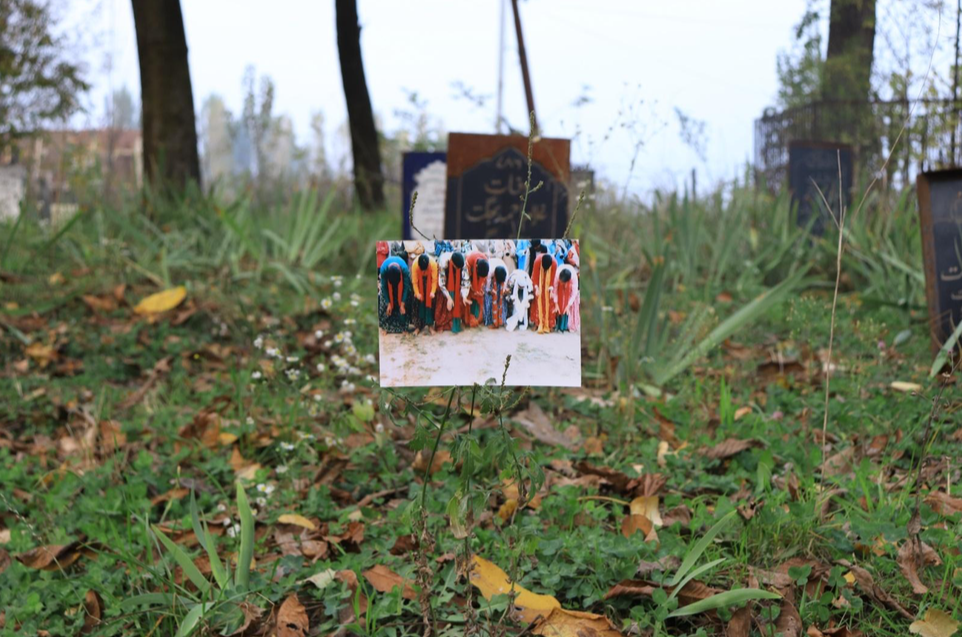
A Salute to Life after Performance, Khursheed Ahmad, 2021, Photograph, Image courtesy of the artist
Unlike archives that stockpile in a digital godown, Ahmad attempts to build an active archive using creative documentation. He does this by giving the reader-viewer access to remnants of the past that still exist today. The act is meant to instigate in contemporary readers a feeling of being removed from the Bhand Pathers’ lived reality.

Untitled, Khursheed Ahmad, 2021, Found Image, Image courtesy of the artist
To do so, he visits spaces formerly occupied by Bhand Pathers during their performances and enacts a last act of placing photos from the past on the ground where there was once a stage, a valley without poetry – a figurative mic drop.
Pallov Saikia’s Rahmoria beholds the ravages of the Brahmaputra with a smile. After many years of the loss of his hometown Rahmoria to the river, Saikia started this work to build a community archive for posterity. Through this work, he proposes the possibility of documenting shared intangible heritage that can be found, held and captured in everyday objects and instances.

Untitled, Pallov Saikia, 2021, Photograph, Image courtesy of the artist
The project stemmed from the deep need and obligation of a person belonging to the place, of which the photobook is only a fragment. While we scarcely see the river itself in this body of work, it is omnipresent as an almost-living entity that continues to devour and consume land. The work is also about the disappearance of generations, of vast knowledge systems that are indigenous and related to the land.
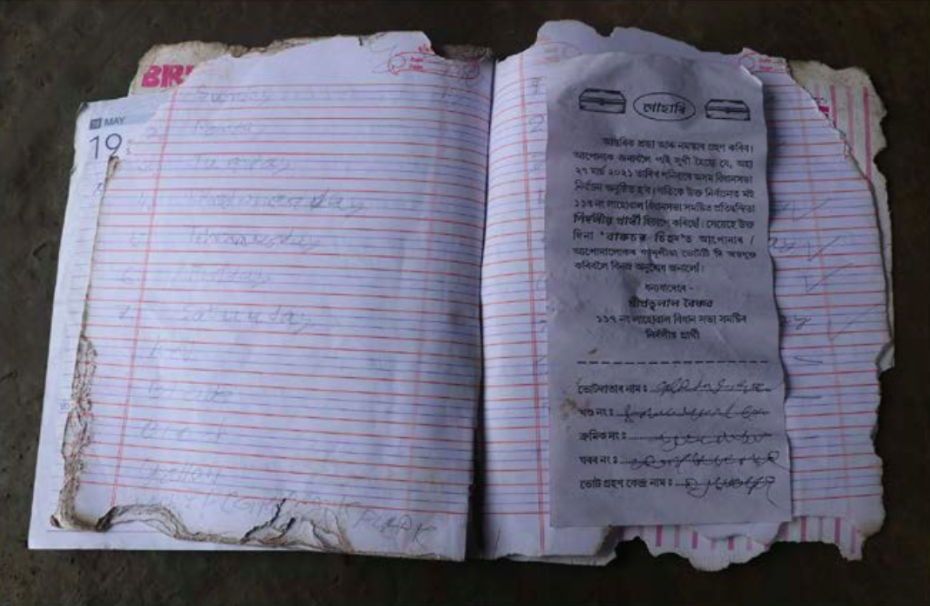
Untitled, Pallov Saikia, 2021, Photograph, Image courtesy of the artist
There is a sense of fragmentation in the photographs – barks of trees, of weathering and decay and time-worn objects – snippets of Assamese science books, the Brahmaputra bank, poems, beehive remains, sketches of the riverbank. They also capture a sense of the aftermath of desolation in the recurrence of figures that are slouching and wearing distressing masks.
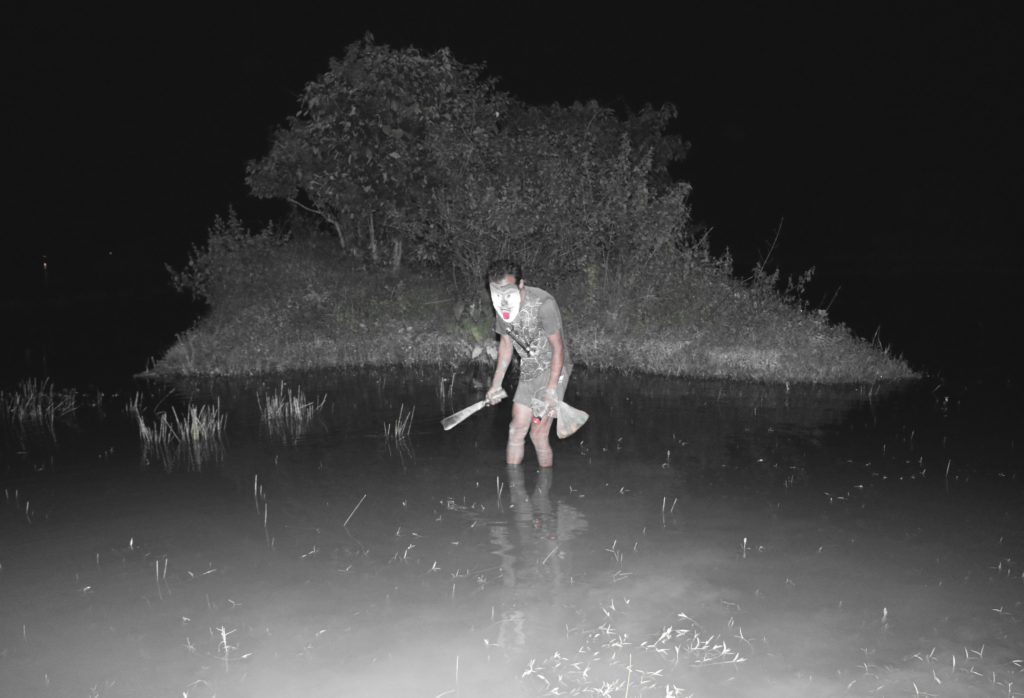
Untitled, Pallov Saikia, 2021, Photograph, Image courtesy of the artist
On the contrary, Saikia shares that the processes of taking these photographs were performative, improvised and playful even. Many of the photographs were taken in collaboration with Sonel Gohai, a fellow Bihu singer from the region. Saikia reminisces of this collaboration as joyful memories of sharing through hours of conversation, of walking and eating together. The consequence of Gohai’s ingenuity – using leftover jackfruit as a mask, mimicking cows, sleeping along the bank to pose for photographs – is a series of serious, dark and morbid images.
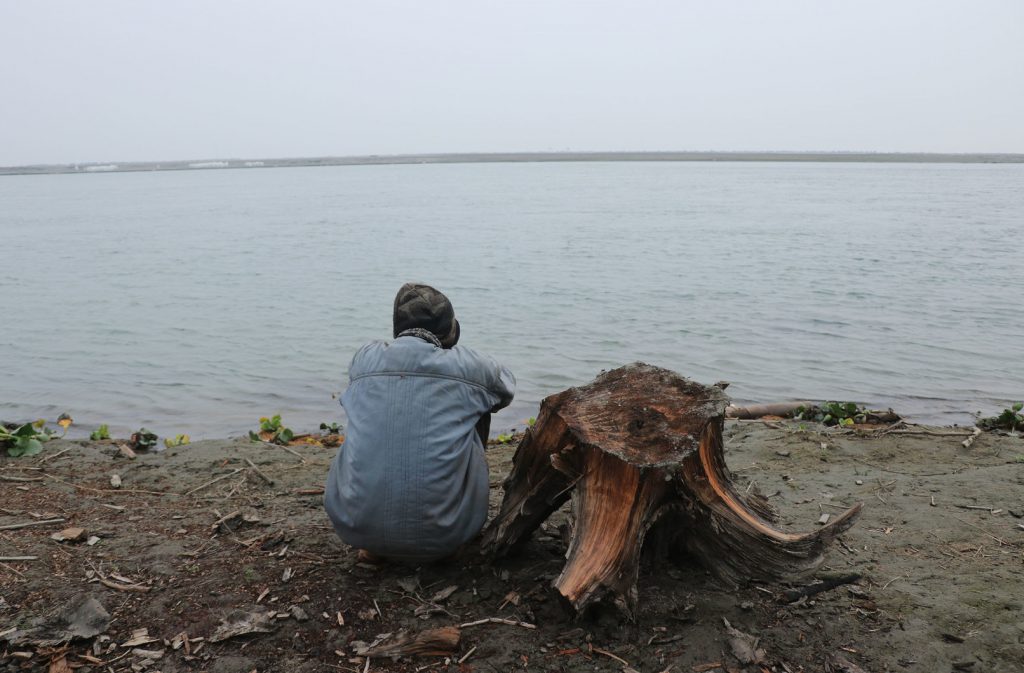
Untitled, Pallov Saikia, 2021, Photograph, Image courtesy of the artist
It makes you wonder where the natural inclination to present a calm picture despite the grim backstory comes from. It may be important at this point to remember Assam as a place that is steeped in the exigencies of natural and manmade disasters, of violence, of erosion where extractive forces run rampant. While this may be true, the photobook stems from an innate determinism to tell the story of Rahmoria – contextualising the community and life there beyond the mould.
The photo series is augmented by excerpts from a Bihu folk song:
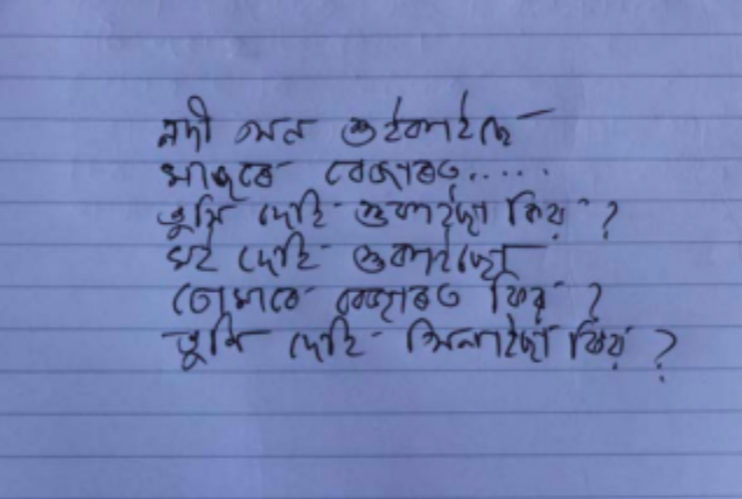
Bihu Song, Pallov Saikia, 2021, Photograph, Image courtesy of the artist
The river is drying in the yearning for fish
O dear, why are you drying?
See, I am drying in the yearning for you
O dear, why are you drying?
Ishwari Arambam is an Event Coordinator at MAP. Her love language involves jazzy hip-hop, homemade thalis and brothy meals.








